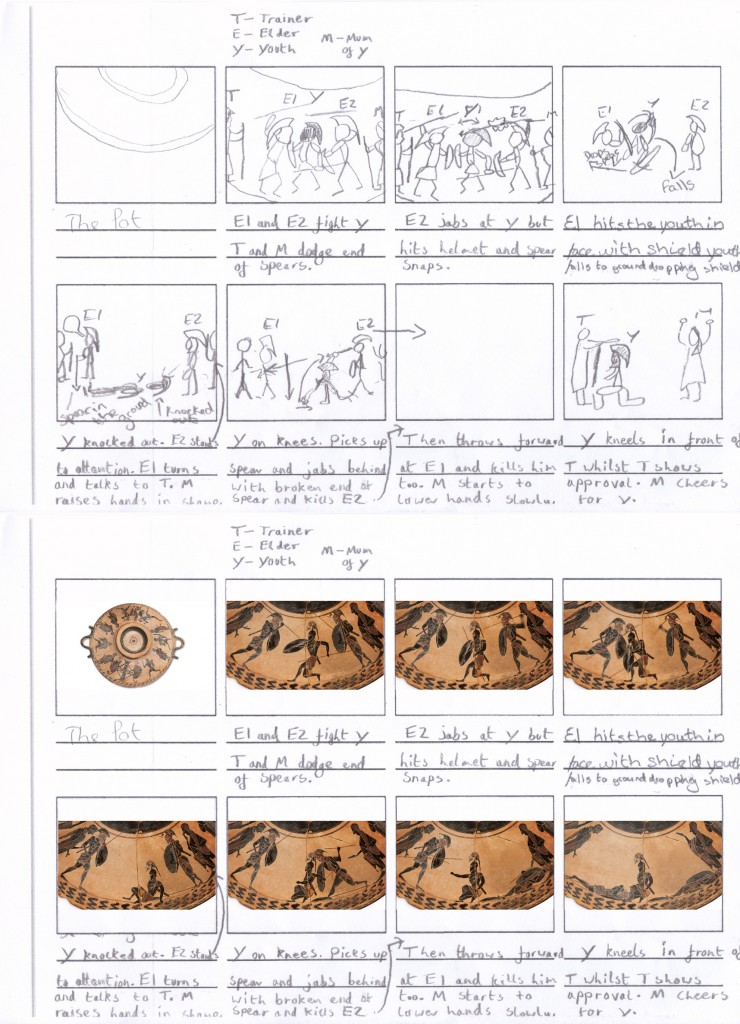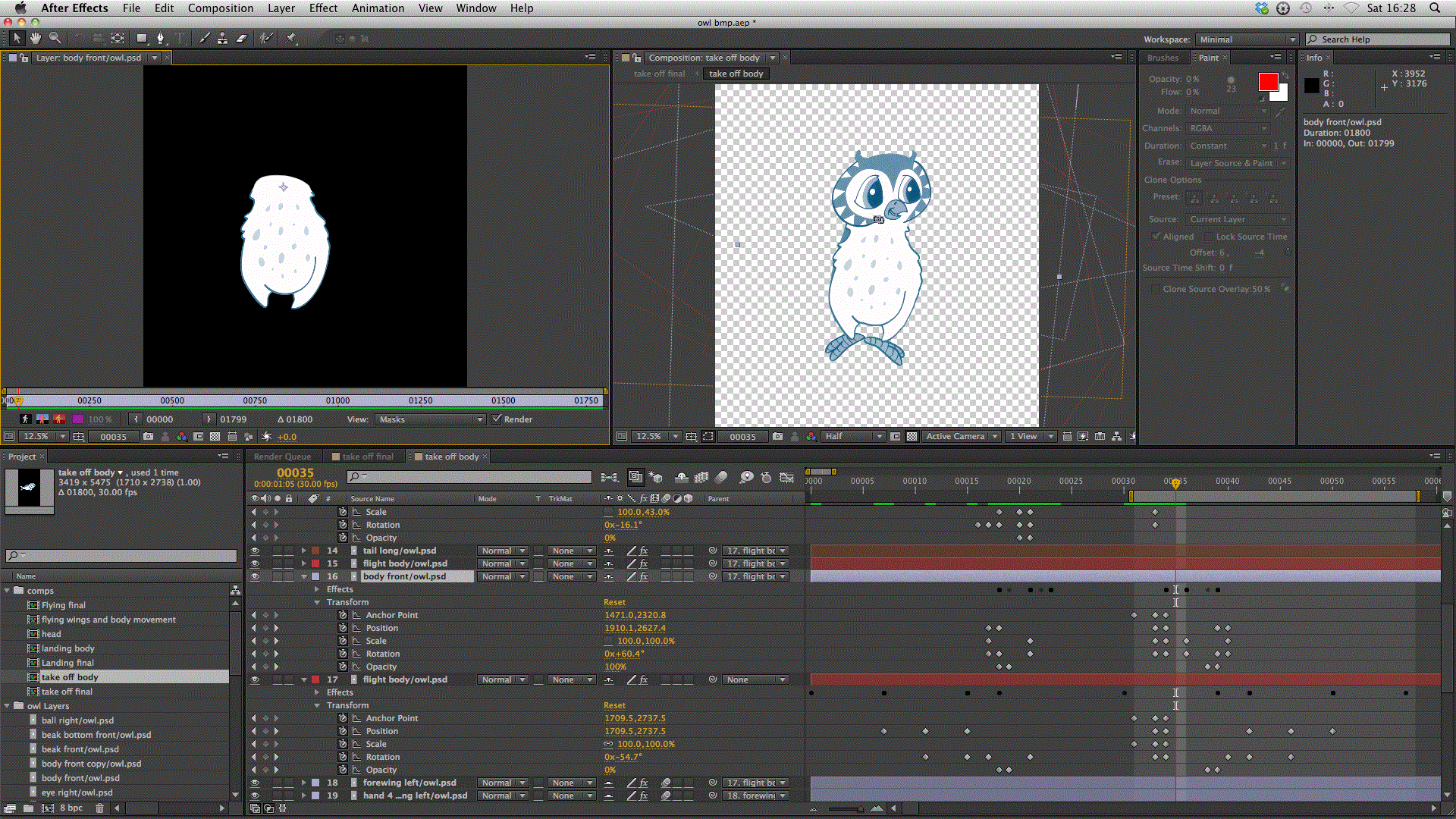Author: ure-discovery
Aphrodite’s Storyboard
Steve continues to work on the storyboards drawn by the pupils of the three schools collaborating with us. Check back soon for the next two.
To learn more about Steve’s work, please have a look at www.panoply.org.uk
Pandora Storyboard
The story of Pandora and her box comes to life in the young people’s storyboard.

To learn more about Steve’s work, please have a look at www.panoply.org.uk
Pots and Pictures
This series of posts aims to give readers a quick overview of the objects used in the Ure Discovery project and introduce them to more resources. A total of 8 different pots will be covered – each of which have been examined by different local schools and will be part of the Ure Discovery virtual trail and exhibition.
Each post will cover a brief description of the type of object being discussed, some background to the scene depicted, examples of other similar objects around the world and the opportunity for further research.
Combat Storyboard
Steve Simons’ work towards the animation of the images on the 8 pots chosen for the project continues.
Here is the evolution of the storyboard for the “Combat” animation, showing the fearless and relentless fight of a Spartan. To learn more about Steve’s work, please have a look at www.panoply.org.uk
To learn more about Steve’s work, please have a look at www.panoply.org.uk
Storyboard evolution
Animating Sophie
Thinking about a touchscreen interface
iMuse is part of the Arts Council England World Stories project in the Ure Museum of Greek
Archaeology.
Working with a student panel, 14-16 year-olds from three
schools, Guja Bandini, the Museum’s education officer, and professional
animator Steve Simons, iMuse is tasked with providing an iPad app. This
will bring together material the project produces, interpreting myths in a fun
and engaging way based on an object within each display case.
The overall
Project is about young people engaging with the objects in novel ways with iMuse
having a particular interest in ensuring accessibility/inclusion are considered.
Having an app is a means to an end, not a primary aim, so we’d agreed to use the
mini web app previously tried in both the Museum of English Rural Life and the
Ure. This was initially designed for use with QR codes on object labels, with a
simple, layered interface using symbols and only a modicum of text. In the Ure,
this could be used alongside a printed map.

While the interface did seem to provide a reasonably accessible way into finding out about objects (http://www.emeraldinsight.com/journals.htm?articleid=17068126&ini=aob), several things have set us experimenting again.
- a comment from a teacher-participant that text on the main pages could prove a barrier
- the decision by the Panel that Sophie the owl should act as guide in some way
- the difficulty of interpreting a map
- observing that visitors will experiment with a touchscreen without much instruction (e.g. the Ladybird book in the MERL)
- the open invitation to create what materials you like about an object/myth (i.e. unknown numbers/types will arrive)
So, we’ve stepped away from mimicking the old ways (buttons looking like you are controlling something like a cassette recorder). Instead we are experimenting with an interface which has no written text initially, but has photos of the actual display cases to help orientation. Sophie as the cursor/guide, following the visitor’s finger, flies past these, settling on an object when requested. The visitor decides which bits of info they want to look at and can easily ‘fly back/forward’ to other cabinets.
http://youtu.be/NFY0clLaz2o
It’s not sensible to decide the exact interface until we know what material is
going to be provided, but already we have some good ideas coming in about
highlighting objects, having audio/visual ‘pop-up instructions, and ensuring any
text-based items have audio versions, and any visual items have audio
descriptions.
There’s masses to think about here, with potential for more
use of the media such as signing or captions on video.
There are also
practical considerations, not least iMuse’s very limited technical coding
ability and our requirement that this remains a web-type rather than native app.
The good thing is there is time for us all to discuss the possibilities and to
do some trialling before the launch in early Summer.
Sophie flying – Animation by Steve Simons
Welcome
Hello everyone and welcome to the new Blog for the Ure Discovery project.
Ure Discovery expands on the great success we had last year with the Ure View project (http://blogs.reading.ac.uk/stories-of-the-world/2011/11/16/welcome-to-the-ure-view-blog/) which as part of the Cultural Olympiad was also showcased in Arts in Parliament on 24th July 2012 (see http://rpmcollections.wordpress.com/2012/05/24/ure-view-bringing-ancient-greece-to-life/).
We are delighted to have received further funding from the Arts Council England after submitting our proposal in November. Ure Discovery recruited a panel of University students who will once again work with the pupils of local schools to create an innovative exhibition voicing their own interpretations of the collection.
The young people will be encouraged to use portable modern technology (iPads) to create a virtual tour of the Museum, in which technology enhances and sustains the visitor’s experience of the collection. Under the supervision of the student panel, the team of school pupils will use digital images and sounds to bring ancient art to life and the use of tablets will allow a much more flexible, accessible and personalised approach to the final result.
The student panel worked really hard throughout the first term of this academic year to build up a project plan and framework with the digital artist Steve Simons who will once again collaborate with the Ure Museum for this year’s project. They have begun to engage with the 3 schools (Addington School, Kendrick School and Maiden Erlegh School) to organise dates and times for a series of workshops in the New Year.
This space will give voice to the thoughts, impressions and ideas of all of us working on this project.
I would like to wish everyone happy holidays and I will update the blog again in the New Year with some more details and a progress update.




